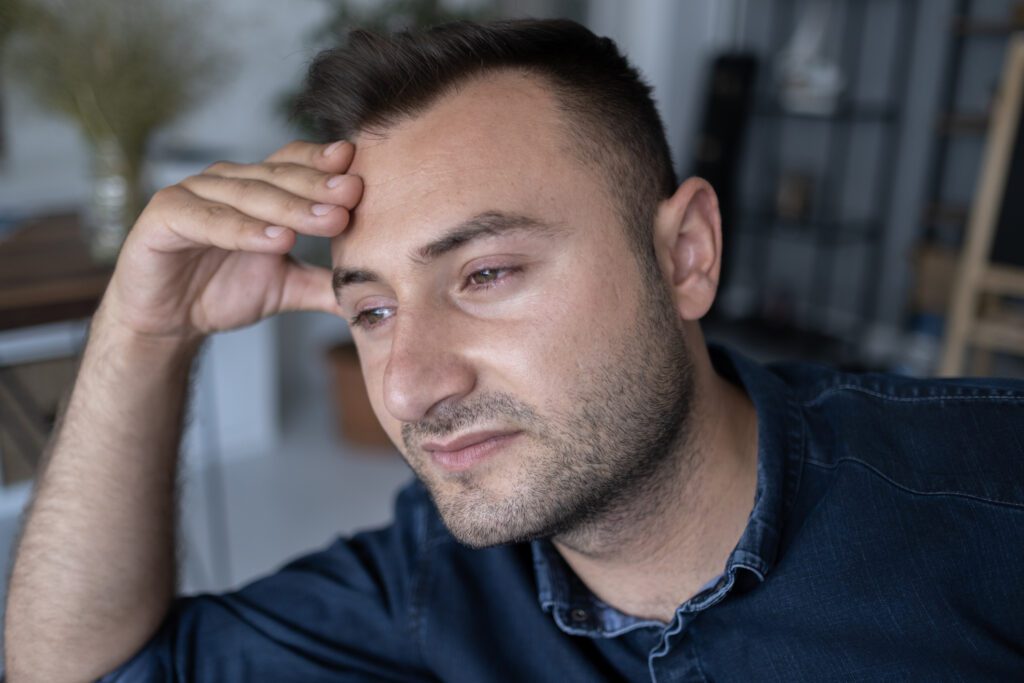Will Your Red Face Disappear After You Stop Drinking?
Will Red Face Go Away After I Stop Drinking?
Have you ever wondered, “Will red face go away if I stop drinking?” Facial redness is a common symptom that appears with drinking. The facial redness experienced during an alcohol flush reaction may be a temporary inconvenience.

What Does an Alcohol Flush Look Like? Will Red Face Go Away If I Stop Drinking?
Red face due to alcohol consumption is also known as an alcohol flush reaction. It is a condition in which a person’s face becomes red or flushed after consuming alcohol.
This happens because the body has difficulty breaking down a substance called acetaldehyde.
What is Red Face?
What Does Red Face Feel Like?
Red face is often accompanied by warmth or a sensation of heat on the skin. Some individuals may also experience a tingling or prickling sensation in the flushed areas. Some individuals may also experience redness on their neck, chest, or other body parts.
What Causes an Alcohol Flush Reaction?
Will Red Face Go Away If I Stop Drinking?: Who Experiences Red Face?
Anyone can experience an alcohol flush reaction. However, it is more commonly observed in individuals of East Asian descent.
Studies have shown that a significant percentage of East Asians, ranging from 36% to 50%, are susceptible to this reaction.3
However, it’s important to note that alcohol flush reactions can also occur in individuals from other ethnic backgrounds due to similar genetic variations.
What Are the Symptoms of an Alcohol Flush Reaction?
It’s worth noting that an alcohol flush reaction is not just limited to facial redness. Some individuals may experience additional symptoms, such as:
- A rapid heartbeat
- Headache
- Dizziness
- And nausea
Will Read Face Go Away If I Stop Drinking?: Is Red Face Harmful?
Suppose you experience an alcohol flush reaction or have concerns about its impact. In that case, it’s advisable to consult with a healthcare professional.
Will Red Face Go Away When I Stop Drinking?: Symptoms of Alcohol Red Face
- Facial Redness: The most common symptom is redness or flushing of the face. It happens particularly to the cheeks and nose. The redness can be patchy or widespread. It may appear within minutes of consuming alcohol.4
- Warmth or Heat: Individuals experiencing alcoholic red faces feel warmth or heat in the affected areas. The skin may feel hot to the touch.
- Itching or Tingling: Some people may experience itching or tingling sensations along with redness. This can be mildly uncomfortable or more intense.
- Burning Sensation: In addition to the warmth, some individuals may also experience a burning or prickling sensation on their faces.
Severity of Red Face
Is Alcohol Flush Reaction Reversible? Will Red Face Go Away If I Stop Drinking?
- The severity of the reaction
- The amount of alcohol consumed
- The overall health of the individual
Will Red Face Go Away If I Stop Drinking?: How Can I Avoid Red Face?
Will Red Face Go Away If I Stop Drinking?: Are There Any Potential Health Implications Associated With the Alcohol Flush Reaction?
Will Red Face Go Away If I Stop Drinking?: Sensitivity To Alcohol-Related Effects
- A rapid heartbeat
- Headache
- Nausea
- And dizziness
These symptoms indicate that the body may not efficiently process alcohol, potentially increasing the risks associated with alcohol consumption.
Influence On Alcohol Consumption Patterns
The alcohol flush reaction can be a warning sign for individuals. It may signal that their bodies may not tolerate alcohol well. This can influence their alcohol consumption pattern.
Will Red Face Go Away If I Stop Drinking?: Alcohol Intolerance
Red face is often associated with alcohol intolerance. This means that the body has difficulty metabolizing alcohol efficiently.
Acetaldehyde can cause various symptoms, including characteristic facial redness.
Alcohol intolerance may manifest as other symptoms, such as nausea, headaches, rapid heartbeat, and dizziness.
Increased Risk of Alcohol-Related Conditions
People who experience the alcohol flush reaction may be at a higher risk for certain alcohol-related health problems.
Prolonged and excessive alcohol consumption can lead to:5
- Liver damage
- Pancreatitis
- Cardiovascular diseases
- Certain cancers
- Or other complications
Will Red Face Go Away If I Stop Drinking?: Disincentive For Excessive Drinking
How Can I Prevent an Alcohol Flush Reaction?
Avoid Or Limit Alcohol Consumption
Know Your Triggers
Pay attention to the specific triggers that induce the alcohol flush reaction in you. It could be certain types of alcohol. It may be specific ingredients or even the amount consumed.
Understanding your triggers can help you make informed choices and avoid them to minimize the reaction.
Opt For Low-Alcohol or Non-Alcoholic Alternatives
If you still want to drink without experiencing the alcohol flush reaction, consider opting for low-alcohol or non-alcoholic alternatives.
These beverages have a lower alcohol content or are entirely alcohol-free. They may reduce the likelihood of triggering an alcoholic flush reaction.
Take Antihistamines or Other Medications
In some cases, taking antihistamines or other medications can help alleviate the symptoms of an alcohol flush reaction.
However, it’s essential to consult with a healthcare professional before taking any medications, as they can guide appropriate options and potential side effects.
Maintain A Healthy Lifestyle

Getting The Right Care for You at Choice House
Choice House is a full continuum, long-term men’s recovery program. We view substance use through the lens of trauma and attachment. We help individuals manage alcohol use and break free from dependence.
What We Offer
- Weekly and monthly events
- Daily availability for alumni involvement and community with current clients through friendship, mentorship, and 12-step sponsorship
- Weekly alumni outdoor barbecue in the summer and catered meals in the winter
- Quarterly trips to different destinations
- Follow-up calls after discharge
- Monthly alumni family Zoom calls led by Chief Clinical Officer Jill Krush
Levels of Care
- Inpatient Rehab
- Partial Hospitalization Program
- Intensive Outpatient Program
- Outpatient Drug Program
- Sober Living
- Inpatient Rehab Aftercare
Start Your Journey Today
The path to recovery can be difficult and overwhelming. If you’re ready to start your journey with the support and tools you need to start healing, contact Choice House today.
Resources
- https://pubmed.ncbi.nlm.nih.gov/20620755/
- https://pubmed.ncbi.nlm.nih.gov/22183095/
- https://www.ncbi.nlm.nih.gov/pmc/articles/PMC2659709/
- https://www.ncbi.nlm.nih.gov/pmc/articles/PMC2659709/
- https://classic.clinicaltrials.gov/ct2/show/NCT03497442
- https://goaskalice.columbia.edu/answered-questions/face-turns-red-after-drinking/
- https://onlinelibrary.wiley.com/doi/abs/10.1111/acer.12302
- https://goaskalice.columbia.edu/answered-questions/face-turns-red-after-drinking/
